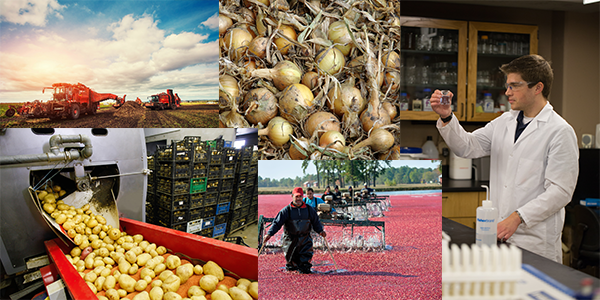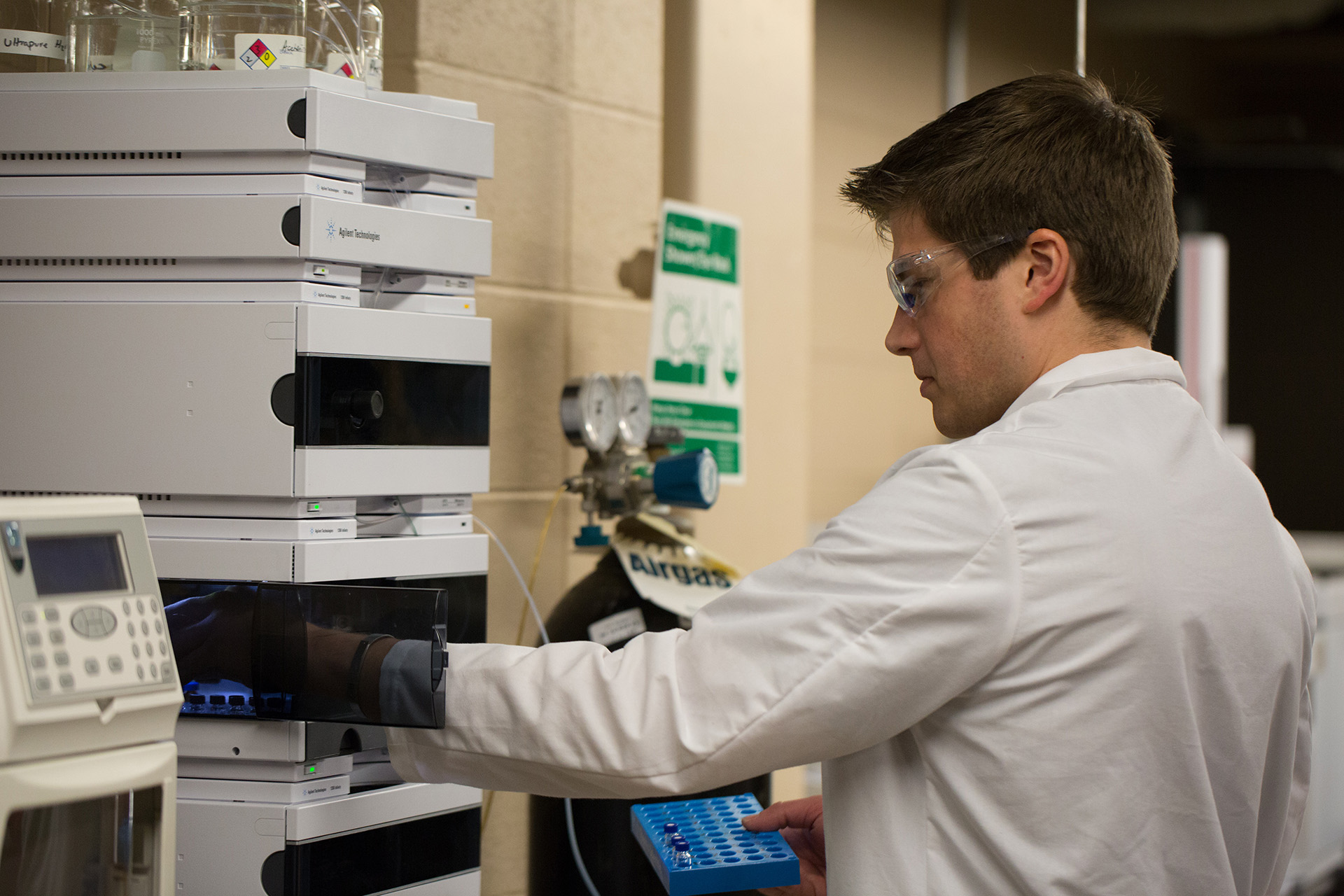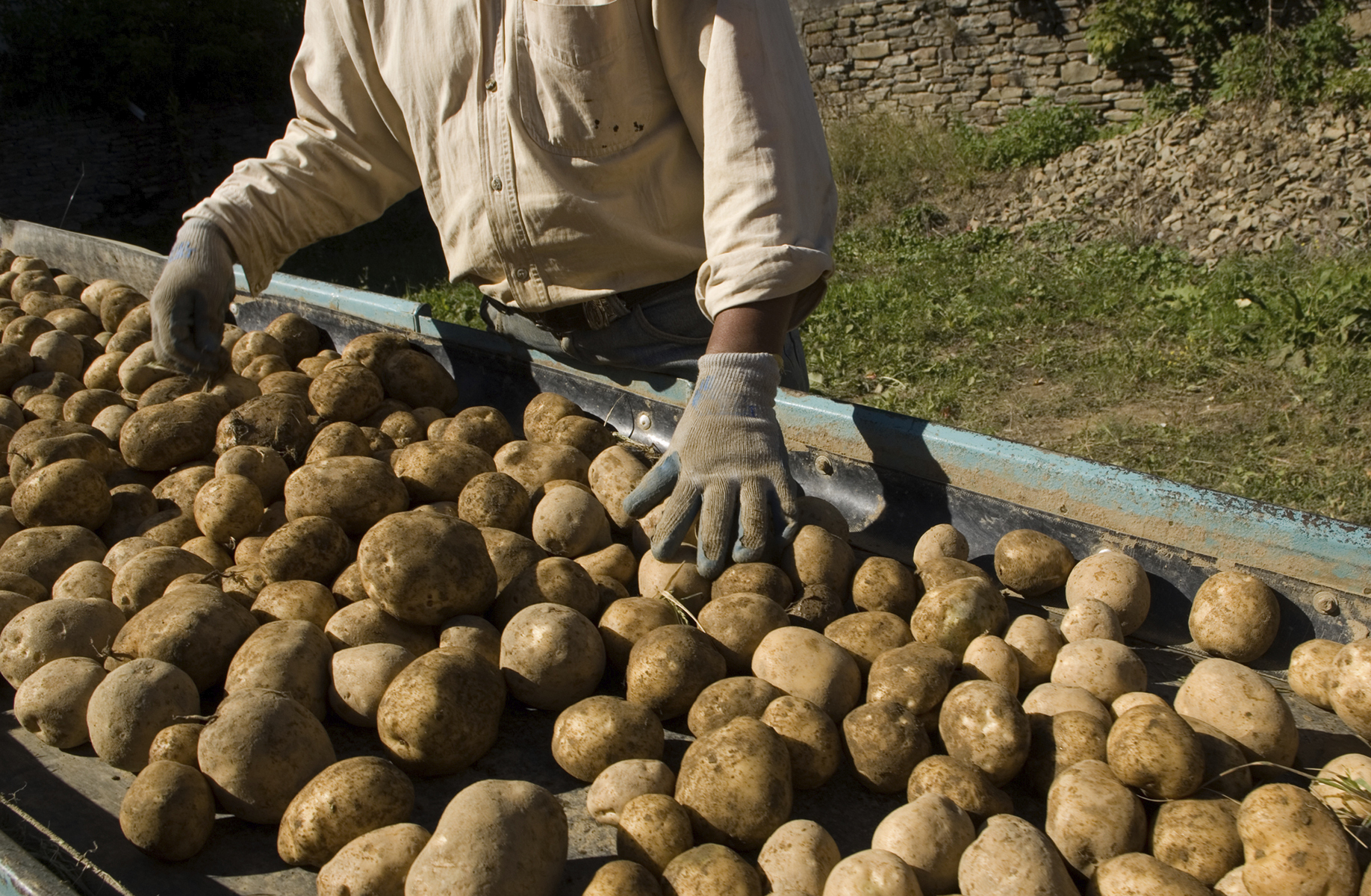Proof of Concept Center: Innovation and entrepreneurship for new uses of vegetable production and processing residuals
Peels, stems and other non-food parts of potatoes and vegetables could be a source of valuable chemicals and extra income for the agriculture industry in Wisconsin.
WIST is excited to be collaborating with Wisconsin potato and vegetable growers and processors on a project to explore new opportunities for revenue from residual materials left after harvesting and processing operations.
Wisconsin is the largest producer of green beans, carrots, red beets and lima beans in the U.S., while ranking third for potato production. Other key processing crops include sweet corn, green peas, cucumbers and onions. Wisconsin grows 40 percent of all green beans in the U.S., 20 percent of all sweet corn and 20 percent of all green peas. As a result, Wisconsin ranks second among U.S. states for harvested acreage and total production of processing vegetables and third for production value. Production and processing of these crops contributes more than $6 billion in economic activity in Wisconsin and supports nearly 30,000 jobs.
First-Year Conference: Market Opportunities for Natural Chemicals from Vegetable Production and Processing
 This half-day conference held at the Heartland Farms Operations, Technology & Training Center at Hancock, Wisconsin, on February 28 featured five accomplished business and industry professionals discussing challenges and opportunities in extracting, purifying and commercializing these chemicals. See details about the 2017 conference here and consider attending next year, when we will host a similar event. Click here to add yourself to our e-newsletter mailing list.
This half-day conference held at the Heartland Farms Operations, Technology & Training Center at Hancock, Wisconsin, on February 28 featured five accomplished business and industry professionals discussing challenges and opportunities in extracting, purifying and commercializing these chemicals. See details about the 2017 conference here and consider attending next year, when we will host a similar event. Click here to add yourself to our e-newsletter mailing list.
Finding value in waste
 Production and processing of these crops generates large amounts of residual material such as peels, stems and liquid material. In fact, an estimated 15 percent of all vegetable material brought to a processing plant does not become finished product. Disposing of this material is a persistent problem for the industry. In some cases a small return may be achieved by selling the residual material for use in animal feed but in other cases it presents logistical issues and costs.
Production and processing of these crops generates large amounts of residual material such as peels, stems and liquid material. In fact, an estimated 15 percent of all vegetable material brought to a processing plant does not become finished product. Disposing of this material is a persistent problem for the industry. In some cases a small return may be achieved by selling the residual material for use in animal feed but in other cases it presents logistical issues and costs.
However, vegetables and their residual materials contain numerous chemicals such as vitamins, proteins, sugars and lipids, waxes and other aliphatic and aromatic compounds such as antioxidants. The specialty chemical sector manufactures a wide range of synthetic or semi synthetic molecules that have the same or similar effects as those chemicals that occur naturally in vegetables. These synthetic molecules command high prices and fulfill essential needs in the plastics, rubber, fuels, cosmetics and home and personal care markets. They provide a range of functionality including heat stabilization during plastics’ processing, stability to light and preservation of cosmetic goods such as face creams and moisturizers.
Natural substitutes
 Naturally occurring products — so-called green chemicals — extracted from vegetable residual material could complement the synthetic chemical market. We propose to uncover economic value from the residual streams, thus turning a problem into an opportunity. Our plan is to target chemicals that provide functionality to non-food industrial uses.
Naturally occurring products — so-called green chemicals — extracted from vegetable residual material could complement the synthetic chemical market. We propose to uncover economic value from the residual streams, thus turning a problem into an opportunity. Our plan is to target chemicals that provide functionality to non-food industrial uses.
This project will also create an entrepreneurial network of growers, processors, researchers and economic development professionals who together generate ideas for innovation to take advantage of the region's assets.
Project participants include
Del Monte Foods, which has three vegetable processing plants in the region;
Heartland Farms, a central Wisconsin-based vegetable grower; Pavelski Legacy Partners, which manages and invests in a diverse portfolio of companies;
Midwest Food Products Association; and the
Wisconsin Potato and Vegetable Growers Association. The
Wisconsin Economic Development Corp. and
WiSys Technology Foundation, a nonprofit supporting UW technology transfer, will provide advice on commercialization strategies.
Funding for this project is provided by a three-year, $499,965 grant from the U.S. Economic Development Administration through its i6 Challenge program. Matching funding from WIST and project participants, mainly in the form of in-kind contributions such as staff time, brings the total expected project value to $1,016, 811.
Read the news release from UW-Stevens Point announcing the grant award and including more information about the project, and the
news release from the U.S. EDA announcing this award and others around the nation as a result of the i6 Challenge.
